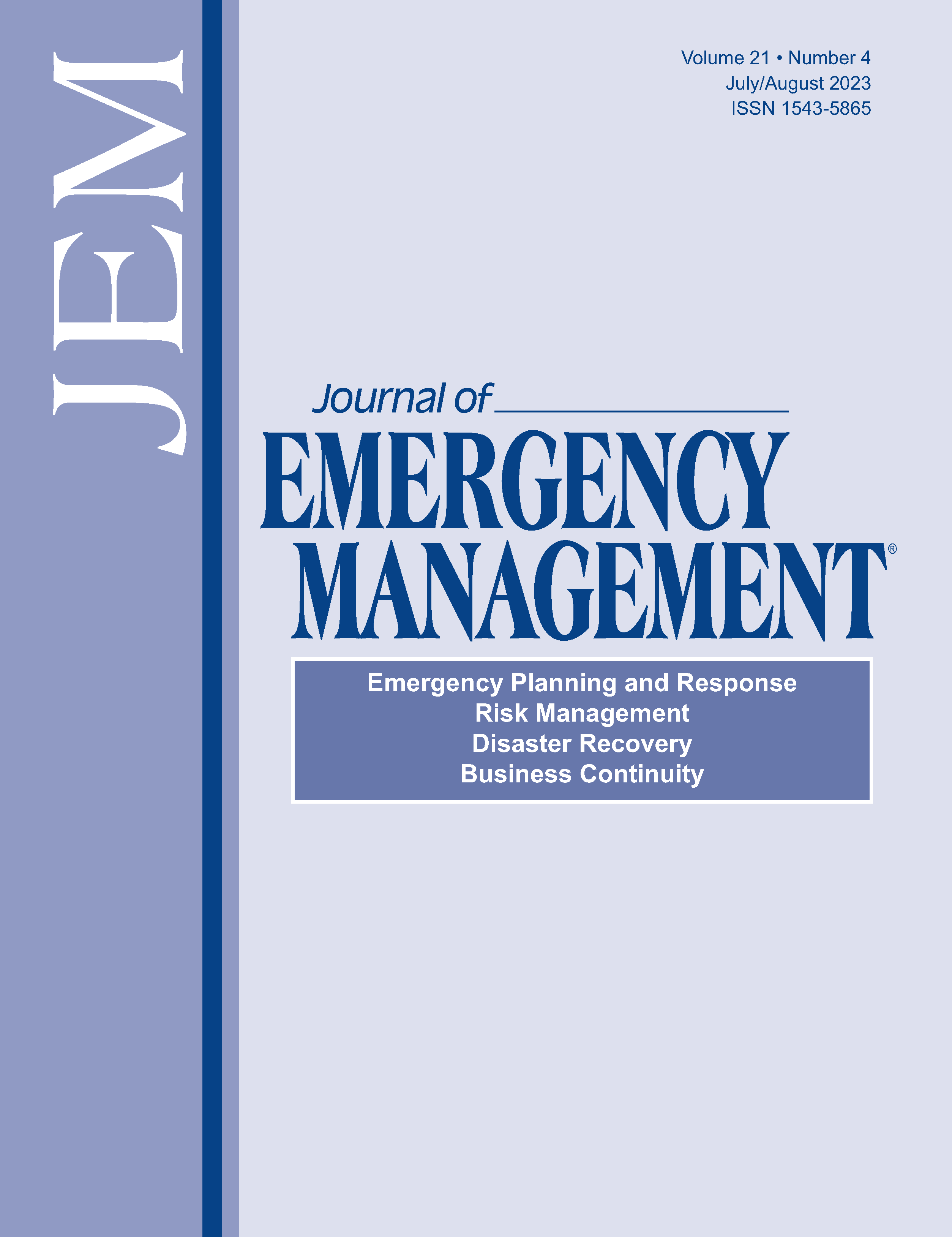The cycle of disparity: A gap analysis of emergency management and information technology
DOI:
https://doi.org/10.5055/jem.0765Keywords:
emergency management, information technology, strengths, weaknesses, opportunities, threats analysis, gap analysis, needs assessmentAbstract
Emergency management (EM) requires an appropriate understanding of its situational context in real time. This involves constant communication between emergency operations and administration, so that informed, coordinated decisions can be made in a constantly changing environment using the most critical and updated information. Challenges in EM include adapting to rapidly changing technologies, adoption, and communication. The goal of this needs assessment is to examine how the effective collection and communication of information has been affected by the technology developed to support it, to identify critical disconnects between emergency management professionals and information technology and telecommunications (ITT) professionals, and to identify opportunities for improved application and user interface development. The methods for this qualitative analysis enumerate and categorize some of the communication challenges faced by the EM community as identified by interviews conducted with subject matter experts using the strengths, weaknesses, opportunities, and threats technique. This study finds that the absence of ITT professionals with experience in emergency response and, conversely, the absence of EM professionals working in EM application development create a “cycle of disparity,” where the key findings of this study both arise from one central input and feed into to each of the other key findings in a continuous cycle, reinforcing what threats and weaknesses already exist.
References
Endsley MR: Toward a theory of situation awareness in dynamic systems. Hum Factors. 1995; 37(1): 32-64.
Barr JL, Burtner ER, Pike WA, et al. (eds.): Gap Assessment in the Emergency Response Community (No. PNNL-19782). Richland, WA: Pacific Northwest National Lab (PNNL), 2010.
Ziemke T, Schaefer KE, Endsley M: Situational awareness in human-machine interactive systems. Cogn Syst Res. 2017; 46: 1-2. DOI: 10.1016/j.cogsys.2017.06.004.
Demir M, McNeese NJ, Cooke NJ: Team situation awareness within the context of human-autonomy teaming. Cogn Syst Res. 2017; 46: 3-12. DOI: 10.1016/j.cogsys.2016.11.003.
Selkowitz AR, Lakmani SG, Chen JYC: Using agent transparency to support situation awareness of the autonomous squad member. Cogn Syst Res. 2017; 46: 13-25. DOI: 10.1016/j.cogsys.2017.02.003.
Schaefer KE, Straub ER, Chen JYC, et al.: Communicating intent to develop shared situation awareness and engender trust in human-agent teams. Cogn Syst Res. 2017; 46: 26-39. DOI: 10.1016/j.cogsys.2017.02.002.
Goodman TJ, Miller ME, Rusnock CF, et al.: Effects of agent timing on the human-agent team. Cogn Syst Res. 2017; 46: 40-51. DOI: 10.1016/j.cogsys.2017.02.007.
Price TF, LaFinandra M: The perception of team engagement reduces stress induced situation awareness overconfidence and risk-taking. Cogn Syst Res. 2017; 46: 52-60. DOI: 10.1016/j.cogsys.2017.02.004.
Yilmaz L, Franco-Watkins A, Kroecker TS: Computational models of ethical decision-making: A coherence-driven reflective equilibrium model. Cogn Syst Res. 2017; 46: 61-74. DOI: 10.1016/j.cogsys.2017.02.005.
Nilsson M, van Laere J, Susi T, et al.: Information fusion in practice: A distributed cognition perspective on the active role of users. Inform Fusion. 2012; 13: 60-78. DOI: 10.1016/j.inffus.2011.01.005.
FEMA: Continuity resource toolkit. Available at https://www.fema.gov/emergency-managers/national-preparedness/continuity/toolkit. Accessed October 18, 2021.
Wright DJ: Toward a digital resilience. Elementa Sci Anthropocene. 2016; 4: 000082. DOI: 10.12952/journal.elementa.000082.
FirstNET: FirstNET authority. Available at https://www.firstnet.gov/. Accessed October 18, 2021.
ATT FirstNET: FirstNET built with At&T. Available at https://www.firstnet.com/. Accessed October 18, 2021.
Published
How to Cite
Issue
Section
License
Copyright 2007-2025, Weston Medical Publishing, LLC and Journal of Emergency Management. All Rights Reserved.






